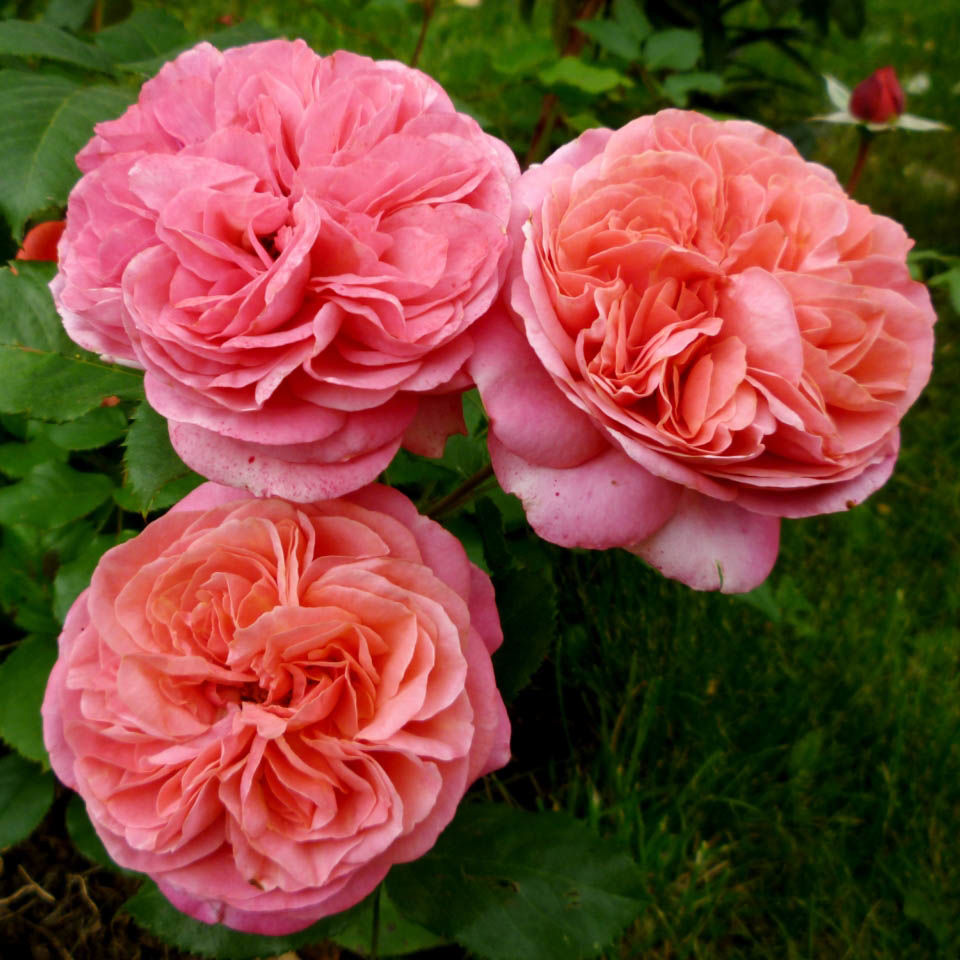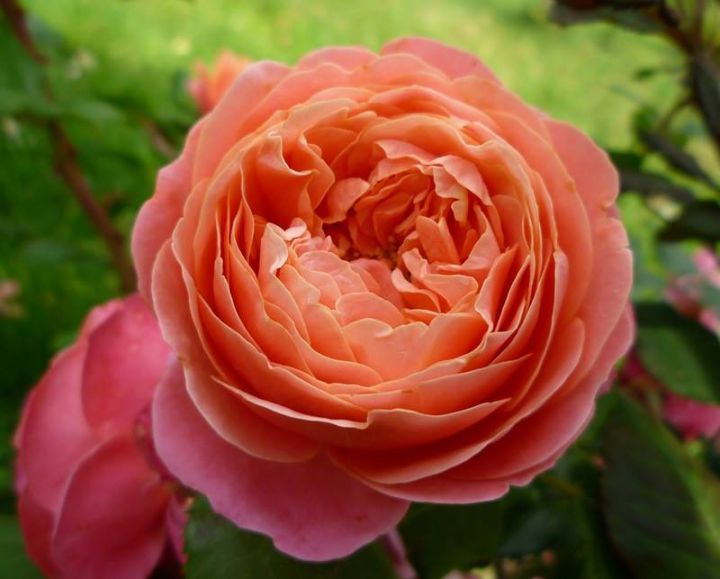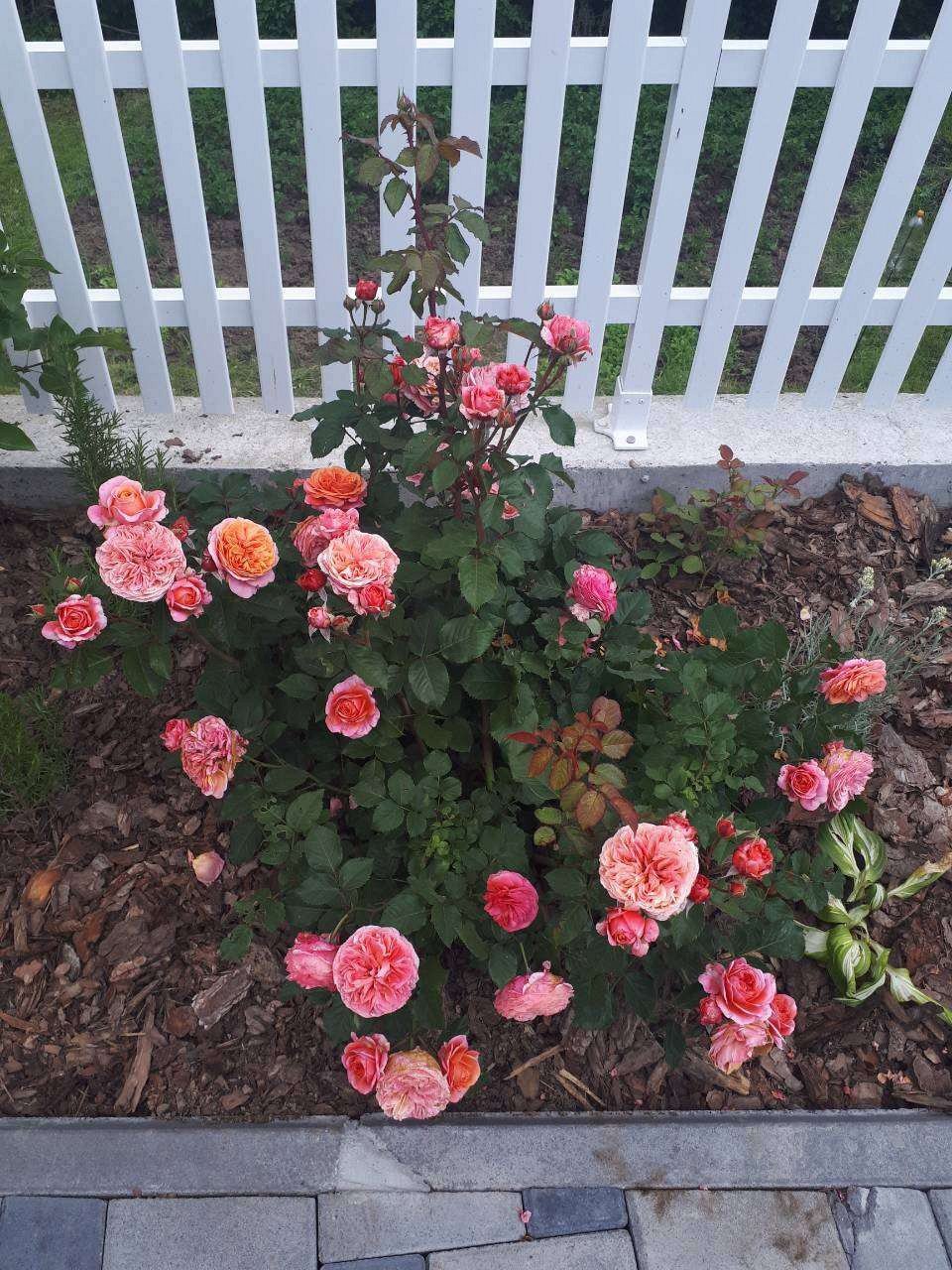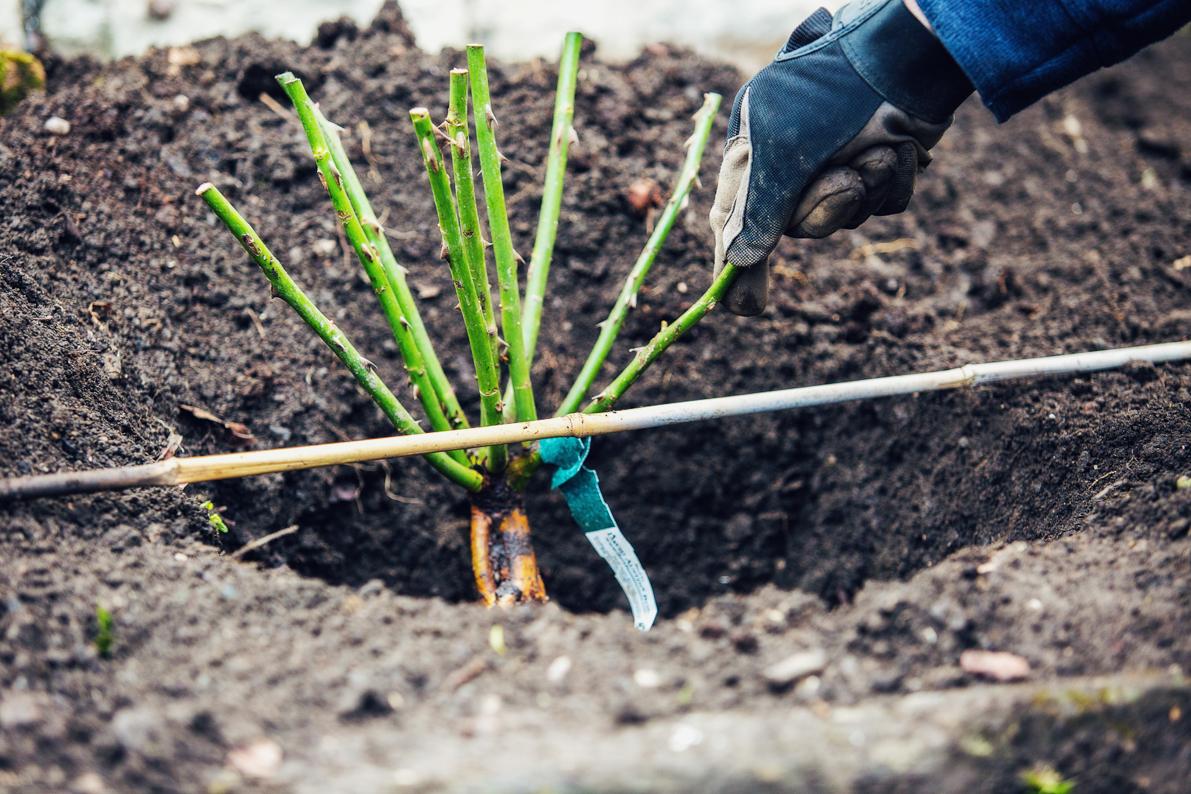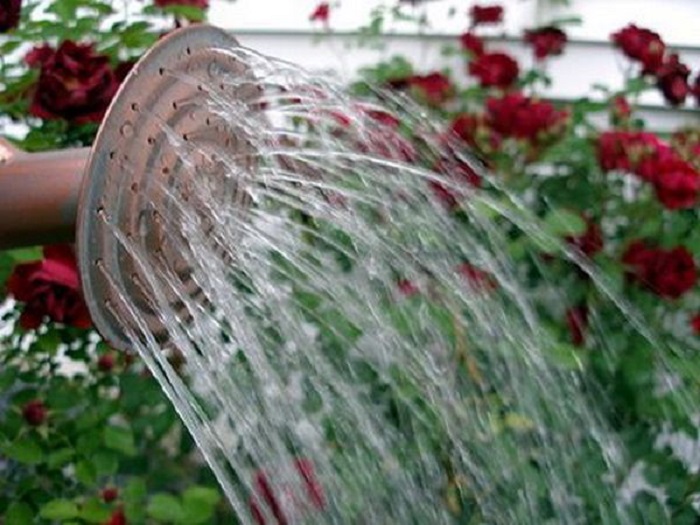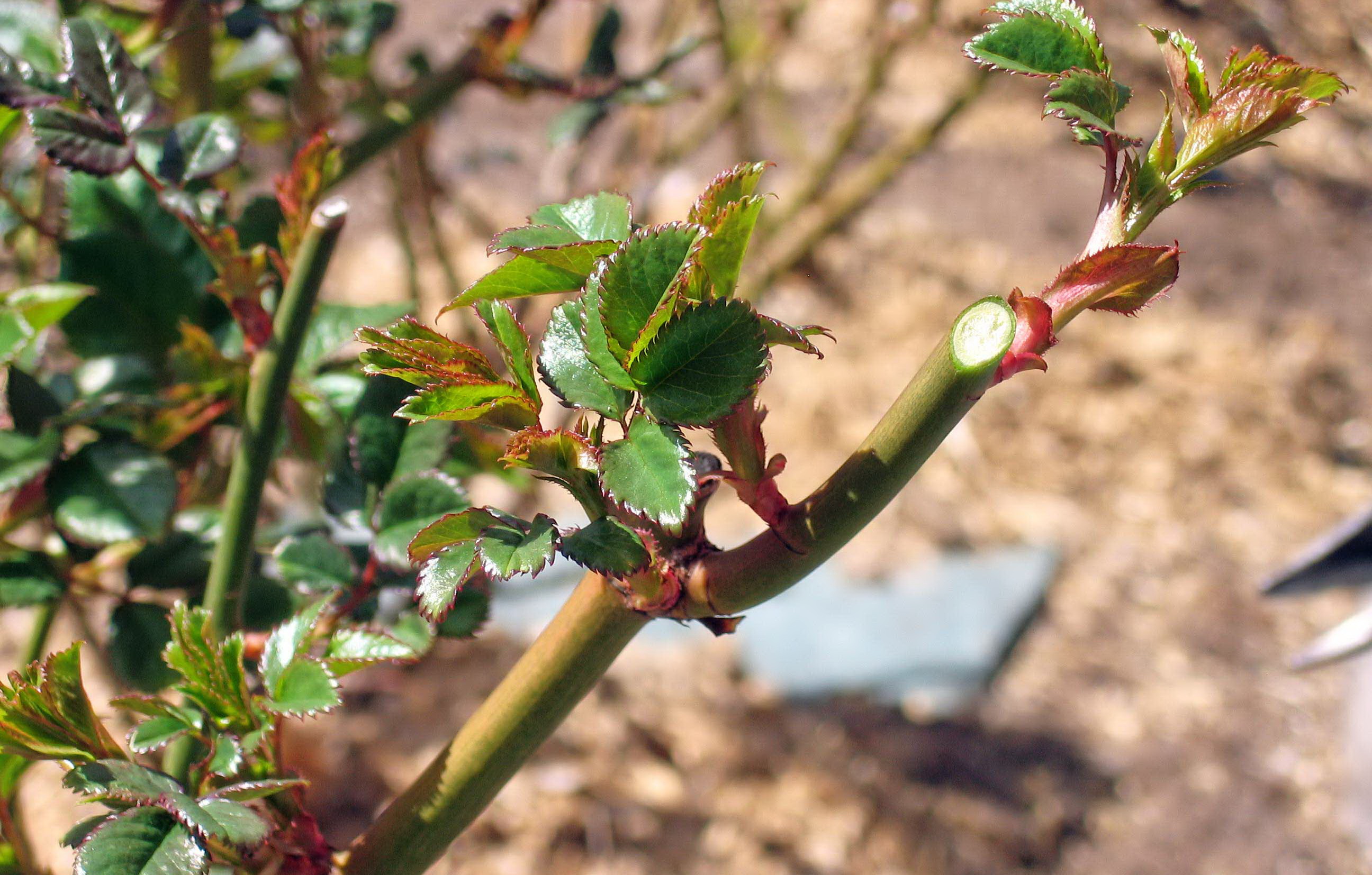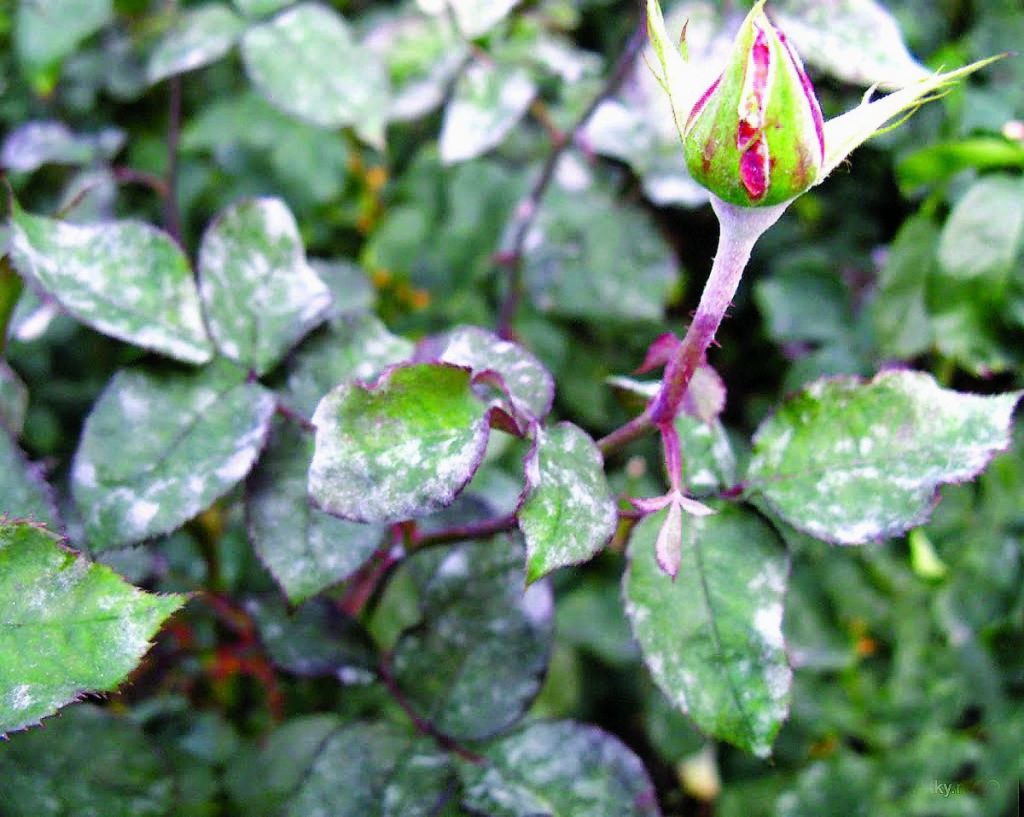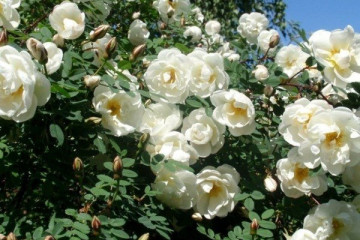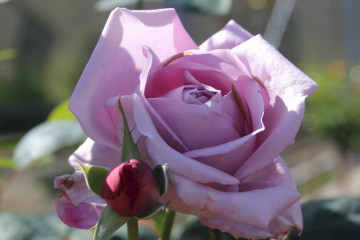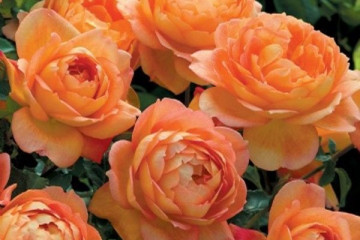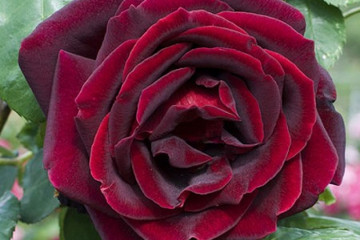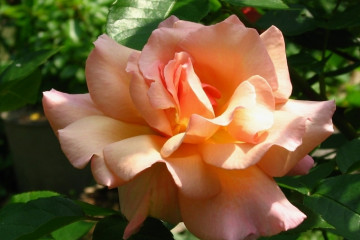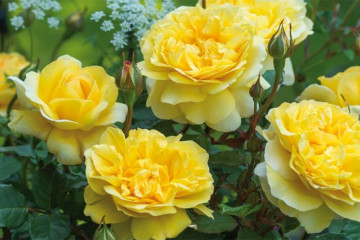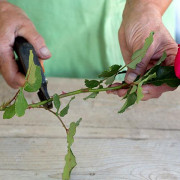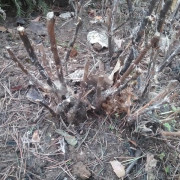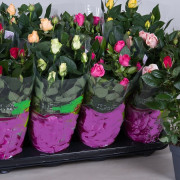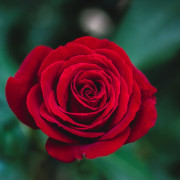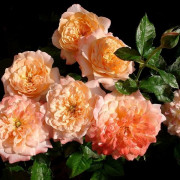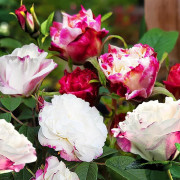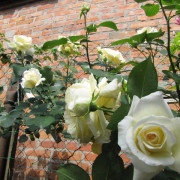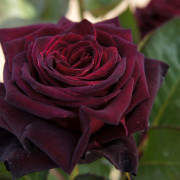Rose Mary Ann - variety description
Content:
Rose Mary Ann is a hybrid tea flower. She has large, bowl-shaped flowers. The petals are orange with a reddish tint. Their color can change depending on weather conditions from dark orange to apricot.
Rose Mary Ann, or Anna Maria
Rose Mary Ann was created in 2010 by scientists from the Rosen Tantau organization. Breeders have combined the traditional type of flower and high frost resistance. At first, it was distributed in Europe, and then in 2017 the variety came to Russia.
Short description
Rose Marie Ann has the following characteristics:
- the bush grows up to 1 m, up to 0.6 m wide;
- the stem is very strong, hollow, withstands several large buds;
- the diameter of the flowers is from 8 to 10 cm. The flower includes from 70 to 80 petals. When they open completely, they resemble a rosette;
- hybrid brush withstands 5 to 7 roses. They have a sweet and pleasant aroma;
- leaves are glossy dark green;
- shades of petals are purple, peach and pink, pale white.
When the bush blooms profusely, it takes on a spreading shape.
Advantages and disadvantages
Rose Anna Maria pleases with flowering all season until the first frost. The advantages of this variety:
- large buds with a pleasant smell;
- resistance to frost and heavy precipitation;
- resistant to diseases: powdery mildew, gray mold, etc.
Disadvantages:
- the bush grows strongly, which makes it impossible to plant many other plants next to it in the flower bed;
- the bush must be kept in partial shade, as it does not tolerate the sun's rays;
- the rose is susceptible to pests.
Use in landscape design
The variety in question is very much appreciated in landscape design for its decorative appearance. It is used both for large spaces and for decorating small flower beds. Anna Maria is combined with various herbaceous perennials.
Growing
This rose variety requires some care. The following are questions that are related to planting a plant.
Rose planting is carried out by seeds or cuttings. Seedlings must be selected in March. It is required to carefully examine the bush. There should be no rot on the roots, there should be 3-4 shoots on the bush.
Before planting a seedling, the roots are soaked in water for 2 hours. To disinfect the root system, it is necessary to soak it in a weak solution of potassium permanganate for 30 minutes.
The seeds are harvested at the end of summer. The fruits are cut in half and the planting material is taken out of them. Then within 20 minutes. it is washed in hydrogen peroxide. Seeds are planted both in the garden and at home.
The best time to plant is from May to June, before the heat hits.
The place should be sunny and protected from drafts and gusts of wind.
Suitable soil: loose, fertilized and clayey.
How to land
To plant seedlings, you must:
- Prepare a pit 50-60 cm deep.
- Spill a hole with two liters of water.
- Fill it with a mixture of earth, sand and fertilizer. All in equal proportion.
- Plant the seedling into the soil 2-3 cm to the point of thickening.
- Tamp the soil around the plant.
- Make an embankment for the flow of water to the roots.
To carry out planting seeds, you need:
- To plant the planting material at home, you need to lay it out between the substrate, which is dipped in hydrogen peroxide.
- Cover everything with plastic wrap and refrigerate.
- They should stay in the refrigerator for two months. If necessary, they need to be moistened.
- After ripening, the seeds are planted in pots. The first 10 hours they must be kept in good lighting.
Then in August they are planted in open ground. The soil should be loose and well fertilized.
Care
Hybrid tea rose care consists in watering, feeding, pruning and replanting. Care for the rose is required carefully so that the bush develops well and blooms.
Watering
Watering the bush is necessary rarely, but abundantly. Enough once a week. The water should be rain or melt.
After the plant is planted and during the active flowering period, you need to water it up to three times a day. In autumn, the rose is not watered, but this is possible only if there is no rain.
Top dressing
In order for the bushes to grow actively, they must be fed with mineral fertilizers. The composition of the soil is improved by organic fertilizing. In the first year, the flower is not fertilized.
To prepare the rose for winter, sprinkle with potassium sulfate. For the first time, dry mineral fertilizers are applied in the spring. This is done after watering by scattering around the bush. Then everything is closed up and watering is done again.
A week later, add mullein solution. It is laid out near the bush, loosened and watered. After the appearance of the ovary of the buds, cow dung is introduced.
Pruning and replanting
Pruning is done in early spring to prevent the spread of fungal infections. Cut short, leaving only a few buds. What is cut off is burned. Then the bush is treated with copper sulfate.
Formative pruning is carried out in the fall to remove excess shoots. If this is not done, then the bush will grow strongly.
The transplant is carried out in the fall. The bush must be dug out carefully from all sides. When the taproot is found, it must be chopped off. The bush is laid out on a large package. The future pit should be larger than the previous one.
For the winter, the bush is covered with dry leaves and pine branches. Pour earth up to 25 cm high on top.
Bloom
The flowering of the variety begins in the second half of June and continues until the end of autumn. Care before and after flowering consists of watering, pruning and feeding. It is also necessary to ensure that the bush does not get sick and is not affected by pests.
The reasons why, perhaps, for some reason, the rose does not bloom:
- a poor-quality seedling was selected;
- the place is poorly lit;
- poor quality soil;
- the bush is deeply planted;
- incorrect pruning;
- poor insulation in winter;
- surplus or deficiency of fertilizers;
- improper watering.
Reproduction
Two breeding methods are used:
- cuttings;
- vaccination.
Step-by-step instructions for grafting:
- Cut off the shoots and divide them into cuttings 6 cm long. Each must have at least one bud.
- Drying is carried out. Sprinkle the cut from the bottom with an agent that affects the growth of roots.
- Plant the cutting in the ground and cover with foil.
- Airing and watering.
- Cover for the winter. Grow or transplant next season.
The vaccination method is carried out in July or August. This requires:
- Shoots that are one year old are cut off pieces 1 cm wide with three buds.
- Leaves and thorns are removed on the scion.
- In the middle part, the kidney is cut off along with the bark.
- Next to the rosehip, the soil is laid out and the root collar is exposed.
- A cut is made on the neck in the form of the letter T.
- Wrap the vaccination site with foil. The kidney should be open.
- Sprinkle the root collar.
Diseases and pests
A common rose disease is powdery mildew. Excessive moisture is considered the cause of its appearance. First, the plant becomes covered with mold, and then brown spots. All damaged parts of the plant must be removed and burned.
Among the pests of roses, there are: a leafworm caterpillar, a moth and a green aphid. When caterpillars appear, chemicals are used. You can also spray the bush with a baking soda solution twice a week. The course of treatment is carried out from spring to the end of June.
Green aphids are fought with a soap solution. They are sprayed with leaves and stems. A bar of soap must be boiled in 10 liters of water. Then insist for 15 minutes. The procedure is repeated after 7-10 days.
In order for the Marie Ann variety to please with a beautiful flowering, appropriate care is necessary. When diseases and pests appear, urgent measures must be taken.
